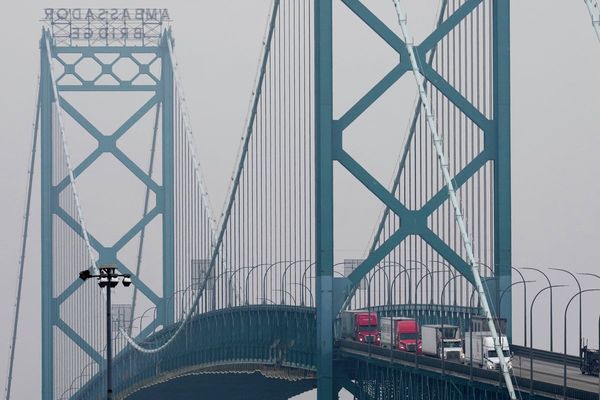
In the shadow of the Bank of England, in the beating heart of the City of London, workers are jet-washing a statue of the Duke of Wellington. Mobilised after the death of the Queen Elizabeth II, they are readying the commercial hub known as the Square Mile to stage an event unprecedented in the lives of all but the most senior City veterans.
In less than 24 hours, at the Royal Exchange, Charles III will be publicly proclaimed the new sovereign of the United Kingdom of Great Britain and Northern Ireland. It will be the second proclamation ceremony of the day. The accession must first be confirmed at St James’s Palace, before heralds travel east to notify the City of London of its new monarch.
Metres from where these events will unfold, a steady flow of pin-striped commuters is suddenly halted, to allow the passage of a convoy of military vehicles hauling giant artillery guns towards the Tower of London, ready for Saturday’s 62-gun salute.
As they roll past, the bells of the City’s many churches ring, muffled in mourning, to mark the passing of a monarch who presided over profound change in Britain’s centuries-old commercial nerve centre.

With a history reaching back 1,000 years, the City – a ceremonial county distinct from London itself – is one of the few institutions that can claim a heritage nearly as long and storied as that of the crown.
The first lord mayor of London, Henry fitz Ailwin de Londonstane, assumed the title in 1189 after Richard I granted greater autonomy to a cabal of businessmen he hoped would raise funds for the crown.
Today, the annually elected position at the head of the City of London Corporation, which governs the Square Mile, is partly ambassadorial, a flagbearer for the capital’s financial centre. But more than that, it gives the holder a seat on the Accession Council, the group of dignitaries tasked with proclaiming the new monarch.
That momentous duty for its current, 693rd incumbent, Vincent Keaveny, a commercial lawyer by trade, reflects the enduring prominence of the City, not just as a global commercial hub but as part of the fabric of British history, one that made the Queen a regular visitor.

It was at the City of London Corporation’s home, the Guildhall, that she gave her famous “annus horribilis” speech in 1992, lamenting the fire that had ripped through Windsor Castle days earlier and the marital woes of her children. Two decades on, she celebrated her diamond jubilee at nearby Mansion House.
By that time the City had changed immeasurably since her ascension in 1952, when it was still recovering from the devastation of the wartime blitz.
David Buik, 78, a veteran financial pundit and former trader, remembers how the rebuild was still going as he entered the City for his first day at work on 18 September 1962.

“When I walked out of the Barbican station for the first time, it was a bombsite,” he said. “What she did was bring a spirit of hope and aspiration for the business community because she triggered a spirit of friendship and innovation.”
London’s tallest building at the start of Elizabeth II’s reign was St Paul’s Cathedral, at just over 111 metres. Today, the City is home to nearly 100 buildings that stretch above 100 metres, including the Gherkin, Heron tower and the 278-metre 22 Bishopsgate.

This physical transformation is matched by the stratospheric growth of the City as a global financial centre, catalysed by events including abolition of exchange controls in 1979 and 1983’s Big Bang deregulation.
At the time of the Queen’s coronation, the leading share index was the FT 30, the forerunner to FTSE 100. It contained no banks or tech giants and was instead dominated by the likes of the shipbuilder Swan Hunter and Morris Motors. The sugar company Tate & Lyle is the only survivor of the original 30, after aerospace company GKN was sold to the investment firm Melrose in 2018.
The roster of the City of London’s livery companies – the modern incarnation of medieval professional guilds – offers another gauge of its evolution. In 1952, the worshipful company of farmers was the newest addition to a list that included brewers, ironmongers, blacksmiths and the very oldest, the mercers’s guild, formed in 1394.
As the City modernised, they have been joined by air pilots, scientific instrument makers, tax advisers and even the worshipful company of management consultants.

All the while, the buzz of commerce grew ever louder. So unstoppable is the commercial machine that, even on the day after the Queen’s death, the business of making money continued uninterrupted with the London Stock Exchange remaining open for financial trading. It will only close for the Queen’s funeral if the accompanying bank holiday should fall on a weekday.
That indefatigability may be appropriate, given how the City has weathered so many financial storms during her lifetime. “There was the Suez crisis in 1956, Black Wednesday, the 1998 Russian credit crisis, the Iraq war, the 2008 banking crisis and Brexit,” said Buik.
What the Queen offered the City, he believes, was an island of certainty and continuity amid the tumult of financial markets.
“The tangible reason is hard to say but the spiritual reason is there because everybody knew what she stood for,” he says. “That feeling of ‘My word is my bond’, so important in the City, filtered through.”







